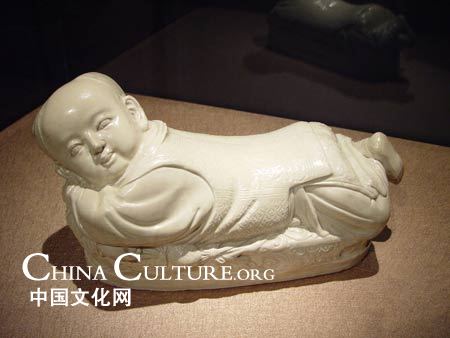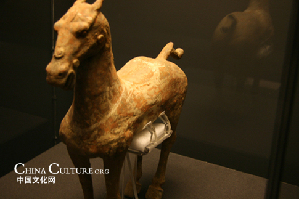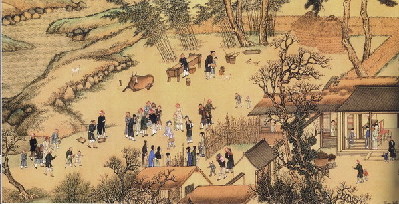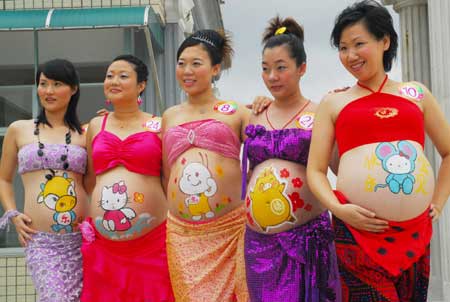| Home > Living in China > Art |
chinese Traditional Architecture
Huaxia(華夏)'s buildings were the models of the Oriental buildings in the past thousands of years.


The two pictures are the photoes of the memorial hall for Guan Zhong(管仲) who was a great statesman of Qi(齊?State in the early days of the Spring-Autumn(春秋) Period. He had a famous words, "The nations of Rong(戎?and Di(狄?are as jackals and wolves, and they are never contented. All states of Huaxia are intimate, and every one should not be deserted. It is like the bird Zhen(鴆?s poison to seek momentary ease with no thought of the future, and this mind should not be kept." The words of Guan Zhong showed the soul of the Spring-Autumn Period, and the soul was called "The Great Principle of Spring-Autumn"(春秋大義). Guan Zhong was the prime minister of Qi Huan-Gong(齊桓公? He put intelligentsia(士? peasants(農? craftsmen(工?and tradesmen(商?on the same important positions. This thought was from the thought of valuing abilities of Jiang Taigong(姜太公?who was the creator of Qi State. So Qi State established a mode of democracy and mercantilism. In the times of Qi Huan-Gong, Qi State upheld the principle of respecting Zhou King and repelling other nations (尊王攘夷), and the armies of Qi brought peace and safety to all of Huaxia States. Confucius(孔子) said, "If there wasn't Guan Zhong, I would be forced to fall my hair down and wear the clothing of other nations."
The architectural style that the two photoes show was the general style from the Pre-Qin(先秦) Period to the Han(漢?Dynasty. This style shows the soul of the Huaxia nation, the great soul containing hardness and softness. This style is unadorned, but it is magnificent at the same time. The plain beauty is most beautiful!


The two pictures are the photoes of Epang Palace(阿房宮?Park of Xi'an(西安). This architectural style is similar to the architectural style of Qi(秦?State. In the Pre-Qin Period, the east states and the west states all kept this kind of style.
The real Epang Palace was burned by conflagration of the war against the Qin Dynasty. The First Emperor of Qin ordered several hundred thousand people to build Epang Palace. And this palace spread from the west of nowadays Xi'an to the Palace of Xianyang(咸陽). In this palace, there were countless treasures and beautiful women which were captured from the east six states. In the last days of the Qin Dynasty, the last king Ziying(子嬰) surrendered himself to Liu Bang(劉邦) who later built the Han Dynasty. Liu Bang entered Epang Palace, and actually he was fascinated by the beautiful women in the palace. Two famous ministers Fan Kuai(樊噲) and Zhang Liang(張良) warned him that luxury cause the Qin Dynasty to be destroyed, so Liu Bang was awakened. He sealed Epang Palace off. Later, Xiang Yu(項羽) who was a great general and hero of Chu(楚?State arrived at Xianyang. He also entered the Epang Palace. When he saw the beautiful women and the treasures, he remembered the doom of his motherland, the tragic history of blood and tears. He was very indignant at the Qin Dynasty, so he ordered to burn Epang Palace.


The two pictures are the photoes of Tang Paradise(大唐芙蓉園?of Xi'an. This theme park shows the culture of the Tang(唐?Dynasty. The Tang Dynasty was so famous that Chinese are called "Tang's people" by foreigners. Xi'an, the capital of the Tang Dynasty, is very proud of its splendid history. In the Xi'an City, there are many traditional buildings of the Tang style. Actually there are all buildings of the Tang style in a street. Tang Paradise is near the Big Wild-Goose Pagoda(大雁塔? In the park, there are the Dance and Tea Ceremony of the Tang Dynasty, and the performances about the history and culture of the Tang Dynasty.


The left picture is the photo of the Shaanxi Historical Museum(陝西歷史博物館? This museum collected a great deal of precious cultural relics, and the relics of the Western Zhou(西周), the Western Han(西漢) and Tang Dynasties are most plentiful because Xi'an was the capital of the three great dynasties.
The right picture is interesting. It is the photo of a KFC restaurant which is beside the fountain square of the Big Wild-Goose Pagoda. The managers of KFC are wise, because they know the meaning of the words "Do in Rome as the Romans do". The building of this KFC restaurant shows the style of the Tang Dynasty, and it is harmonious with other buildings of ancient style. If Starbucks builds a cafe beside this square as KFC, it won't be rejected. Why? The Tang Style is broad-minded.


The two pictures are the photoes of ancient buildings of Kyoto(京都). Kyoto was the ancient capital of Japan from A.D. 794 to 1869. When this city was built as a capital, there was the Tang Dynasty in China. Large numbers of Japanese young people were sent to China and learned flourishing culture from Chinese people. and the famous man was Abe no Nakamaro(阿倍仲麻呂? He was sent to China at the age of 19, and later became an official in China. Abe no Nakamaro had two good friends, Li Bai(李白) and Wang Wei(王維), who were two eximious poets. Their friendship was shown in their poems.
Since the Western Han Dynasty, China and Japan had had friendly relationship. Japanese kings regularly sent enovys to offer tribute to the emperors of China and then got titles. In the Sui(隋?Dynasty of China, Japan started to want an equal relationship with China. Shotoku Taishi(聖德太子) sent diplomatic missions to China four times (in AD 600, AD 607, AD 608 and AD 614), and established a series of complete systems according to the systems of China. In AD 630, Japan first sent a diplomatic mission to the Tang Empire. From AD 702 to 752, the relationship of China and Japan was in the golden times. In 755, An Lushan(安祿山? who was from a foreign family and became a general of Tang, suddenly rebelled against the Tang Empire. China fell into the swirl of wars. The relationship of China and Japan was damaged seriously. In AD 838, the largest Japanese diplomatic mission which had 651 members arrived at China. In AD 894, Sugawara no Michizane(菅原道真) persuaded the king of Japan to stop sending diplomatic missions to China. Though China and Japan stopped the official relationship, the resplendent civilization of classical China completely influenced Japanese from clothing to soul.
Japanese architects built Kyoto according to the layout of Chang'an (長安, modern-days Xi'an) which was the capital of China since the Han Dynasty to the Tang Dynasty. So the layouts of Chang'an and Kyoto were very similar. When you watch the historic sites of Kyoto, you will feel the vivid style of the Tang Dynasty.
Art
 more
moreClassic Chinese Handicraft:
Porcelain pillows, as classic Chinese handicraft,

Chinese Treasures Returned from
As witness of Chinese culture and custom, countless treasures

The lost legacy: classical music
Accompany by the long history of China, Chinese classical music

Customs
 more
moreChinese Kungfu
Kungfu Taste: Learn Martial Art in Shaolin Temple
The mention of Shaolin Temple conjures up images of a quiet and
Keet Kune Do will reappears on screen: BRUCE Lee and
The Legend of Bruce Lee is shot by China Central Television
The Road to the Olympic Games for Wushu
Wushu, also called kungfu, martial arts, is attracting more and more




 print
print  email
email  Favorite
Favorite  Transtlate
Transtlate 
